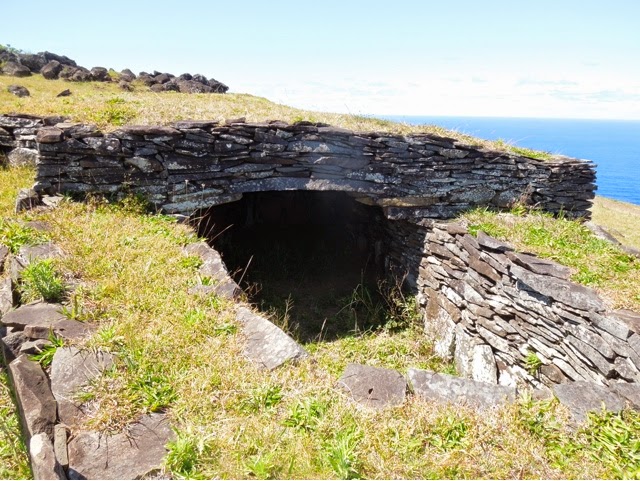Three million years ago, in the middle of the Pacific Ocean at a depth of almost 9,800 feet , a huge volcano began to rise up. This was the birth of Poike, the first of the big volcanos, which now forms the eastern edge of the island. Five hundred thousand years later, a second eruption southeast of the first gave rise to Rano Kau. Finally , 300,000 years ago Maunga Terevaka rose up, ceating the far northern tip of Rapa Nui, which has a surface are of 64 square miles and a maximum width of 7.5 miles.
Rapa Nui's first human inhabitants arrived 1,400 years ago, from Polynesia. This period saw some noteworth developments such as rongo rongo - hieroglyphic script which experts have been unable to decipher, and the veneration of ancestors, centered around the moai, enormous statues made out of volcanic rock. Over 900 moai were built in total.
Hundreds of years passed before new exployers reached the island; this time they were European travelers. The first to arrive was the Dutch mariner Jacob Rogeveen, who gave the island the name Isla de Pascua or Easter Island in 1722.
Rapa Nui is the world's most remote inhabited island. It is separated by 2,300 miles from the American continent at its nearest point: the Chilean coast, Pitcairn Island, the nearest inhabited place is almost 1,250 miles to the southwest.
The culture of Rapa Nui still thrives today and retains many of its original forms. The island's inhabitants are very proud of their culture, which they have preserved and passed down from one generation to the next.
Vananga, the language of Rapa Nui, contines to be actively used; dances such as the Sau-Sau and the Tamure, together with musical traditions, contine to bring life to festivites and ceremonies. The cuisine also safeguards some ancient recipes, such as Tunuahi (fish cooked on volanic rocks heated by burning firewood).
There are 150 species of marine wildlife belonging to more tha 60 different families. About 25% of all species can only be found in this corner of the planet. The Pacific Ocean bordering the island has an excellent visibility of to a dept of 165 feet.
A ceremonial village comprised by 54 houses, related to Make-Make cult and the "birdman" competition. It was an annual ceremony where chiefs of different tribes competed to obtain the first egg of he Manatara.
Participants went down through the cliff and swam to Motu Nui to wait for the bird to nest. Participants returned to the village and was endowed as langata-manu or birdman or the chief - considered sacred.
























































